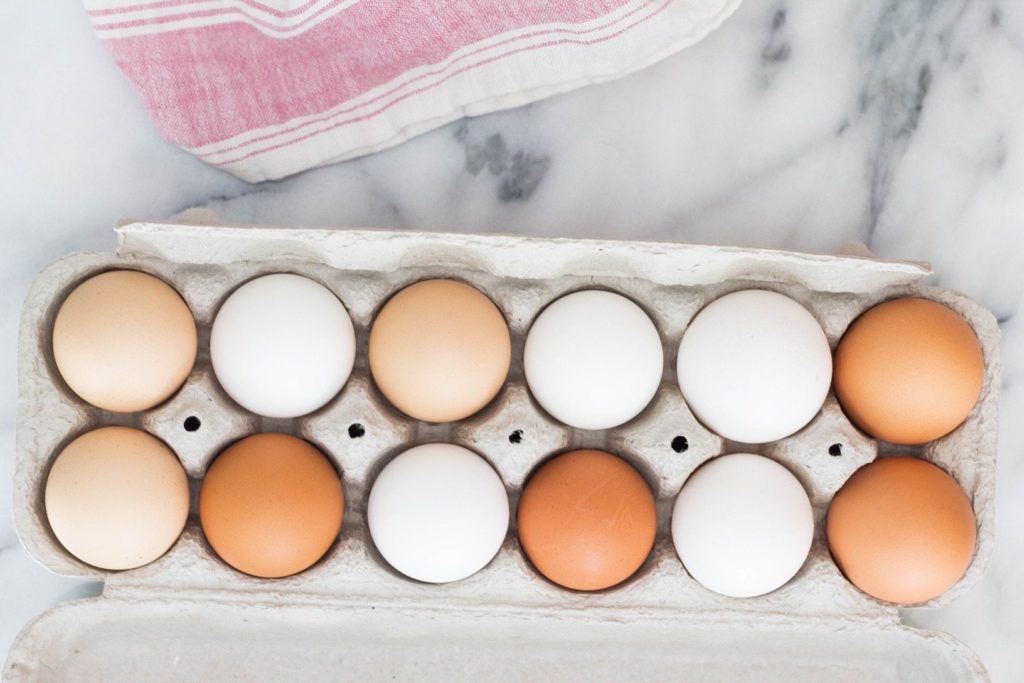welcome to the blog, let's
debunk the nutrition junk
Ever find yourself in the grocery store staring at the egg cartons for a while trying to decipher the egg labels these days? It seems like egg buying has become a bit of a battlefield when figuring out what eggs you feel you “should” be buying.

I wanted to give you guys the full break down of all the labels you will find on an egg carton to make sure next time you find yourself standing in front of the endless number of egg cartons you know exactly what eggs are the best choice for you. This is not me telling you some eggs are healthier than others. I understand not everyone can financially buy the best of the best eggs every week. I simply want to give you the facts behind the labels. Therefore I have broken it down into a good, better best scenario. Allowing you to make the decision for what is the best and financially sound option for your own household.
Common Egg Labels:
Let’s get cracking (couldn’t help myself) and take a look at the major labels you can find on the egg cartons right now!
Free Range/Roaming
“free range” by USDA definition means poultry is to be allowed access to the outside. This phrase can be interpreted quite loosely. While some farmers may let them roam green pastures others will overcrowd them indoors. Barely allowing access outside where there may just be a dirt patch. In context the best option is to check with the farmers on how they handle their chickens with this label.
Cage-Free
This term simply means that the hens are not kept in a tiny cage with another 11 hens. They are free to wander around the hen house, perch on roosts, and lay eggs in nests. This option is actually a fairly good choice considering most mainstream groceries carry them now. Be aware “cage-free” chickens are kept in hen houses which more often than not are quite cramped. So they may or may not have access to the outdoors.
Organic
These types of eggs actually require certification and inspection via the USDA Natural Organic Program. They require hens to be “cage-free” or free range plus having access to the outdoors. Also, the hens are required to be brought up on organic feed meaning no stabilizer chemicals, irradiation, or GMO’s. Organic labeling is the only one of these labels with regulations and enforcements.
Pasture-Raised
These types of hens and eggs are what we typically envision in our minds when we think of a farmer filling a carton of farm fresh eggs. The eggs come from hens roaming around in open fields during the day foraging for insects. Then at night going into the hen house to roost, nest, and lay eggs. Again, “pastured” does not have a legal meaning or a certification process. However, the upside is they tend to come from small farms. Typically having proud farmers that are more than willing to share how they care for their animals. You can find the best quality at your local farmers market and these are the ideal eggs one would look for.
Fluff Labels:

No Hormones – This is definitely a “fluff” label considering all laying hens legally are not to be fed hormones. Therefore the label doesn’t mean much.
No Antibiotics – This label simply means the hens were not given antibiotics in the feed or their water.
Vegetarian Fed/Diet – This label puzzles me every time considering hens are not really vegetarians. They tend to scavage for insects and worms from the ground and even go after the occasional rodent if they’re quick enough.
Omega-3 – This label means the hens were fed an omega-3 rich diet via their feed. This can be added using oils such as flaxseed oil, linseed oil, and even kelp.

Other Eggcellent Labeling Facts:
Grade – This is commonly found as Grade A on most eggs Grade AA is even higher quality. The USDA offers this grading as a voluntary inspection of the eggs. Grade A means unstained shells, defect free yolks, and a “reasonably” clear and thick white.
Size – This can either refer to the weight of the whole eggs per dozen. Otherwise it refers to the size of a single egg whether they are “large”, “jumbo”, etc. is up to your own preference or what the recipe calls for.
Egg Color – This is dependent upon the breed of the hen. The color has no affect on the nutritional facts or taste!
The Nutrition Powerhouse
The nutritional nerd in me couldn’t finish this post for you guys without giving a quick nutrition lesson on eggs of course!
I am sure we have all heard it before “the Egg is a nutrition powerhouse,” but why is it? Just to name a few reasons, Eggs are loaded with vitamins, minerals, high-quality protein, and quality fats.
I am going to zoom in on the “high-quality protein” portion. Eggs contain the perfect amino acid profile, meaning they contain all 9 essential amino acids. Essential amino acids are the building blocks of proteins which our bodies are incapable of producing on their own. Therefore we have to get these 9 from outside sources, aka food. And don’t forget eggs are probably one of the easiest & versatile foods to cook up all while providing you with a fantastic nutritional boost!
I hope this information has given you some guidance for your next adventure to the grocery store and that you find it easier to grab the best carton that you see fit!
Now that you have ALL of the information to make your decision try creating my Mixed Veggie Frittata with THE best eggs for you and your fam!